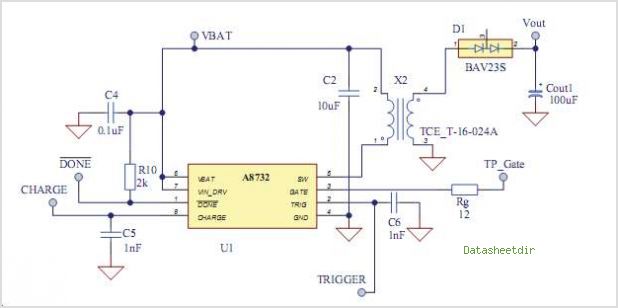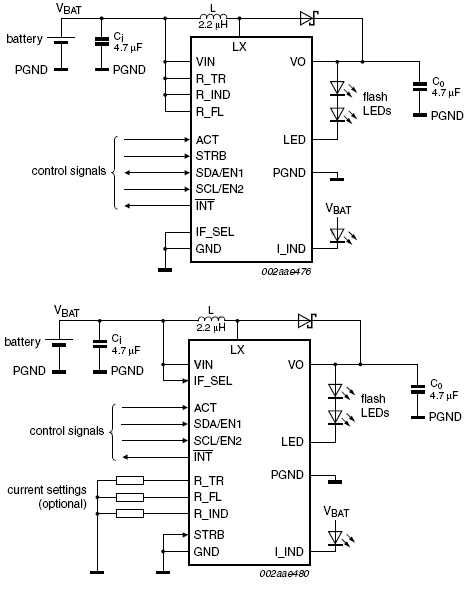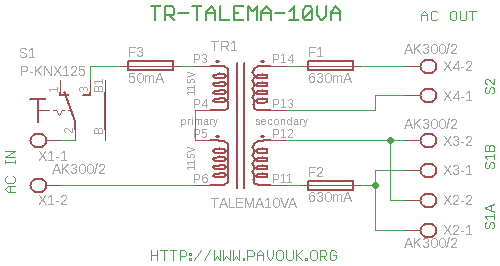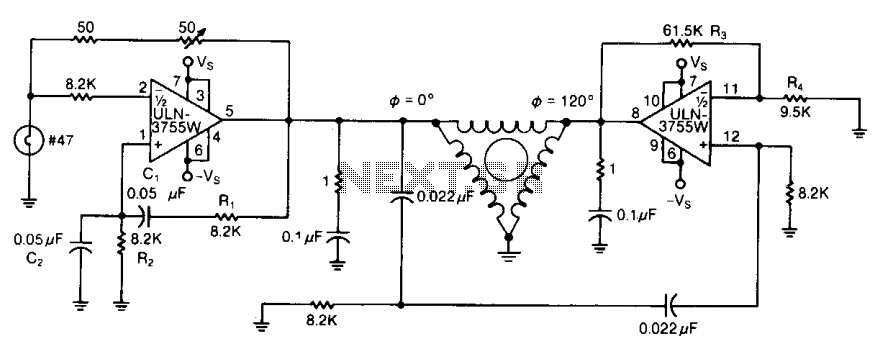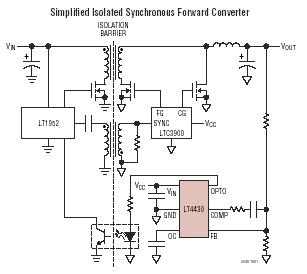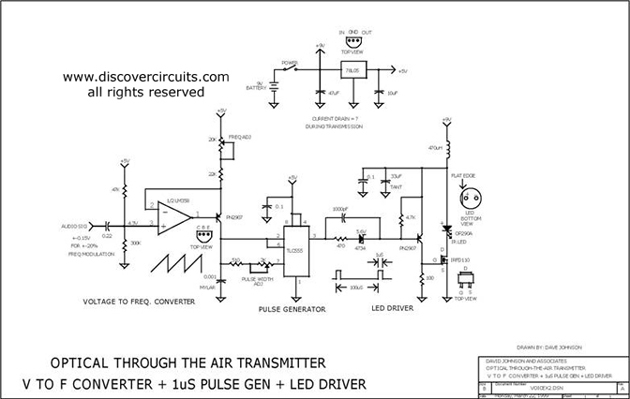
Flyback Transformer Driver

An efficient flyback driver for modern cylindrical rectified television flybacks. Many sources do not provide circuits for driving these transformers, often deeming them ineffective. However, this circuit has been successfully constructed. Significant effort was dedicated to determining the resonant frequency (approximately 15 kHz) and duty cycle, with optimal operation occurring around a 90% duty cycle. Adjusting the off-time trimmer to values near 500-300 ohms may produce corona breakdown at the terminals, accompanied by a hissing sound and ozone smell. This circuit is also compatible with other types of flybacks, given the wide range of frequency and duty cycle. The frequency range can be expanded using a multiposition switch for different values of the C3 capacitor; for instance, a 2 nF capacitor can achieve frequencies between 80 kHz and 200 kHz. However, flybacks with such high resonant frequencies are rare. Additionally, higher values of C3, such as 200 nF or 2 µF, will lower the frequency, allowing for the use of ignition coils and rectified power transformers at 50 Hz to charge high-voltage electrolytic capacitors at 300-400 V. The ignition coil in this setup failed due to insulation breakdown from prolonged arcs. The 555 timer is configured in astable mode, with the capacitor charging solely through a 4.7 kΩ trimmer (with a diode in place) and discharging through a 2.2 kΩ trimmer, enabling full adjustability of the duty cycle. The resulting square wave is fed into a totem pole configuration consisting of a 2N3904 and a 2N3906 transistor pair, which are both cost-effective and readily available. This totem pole arrangement ensures rapid charging and discharging of the gate (approximately 50 ns). The IRF840 MOSFET is an economical and reliable option, rated for continuous currents of 8 A and pulse currents of 32 A, with a drain-source voltage rating of 800 V and an internal zener diode for protection. A snubbing network is incorporated to minimize voltage spikes (unless transformer insulation begins to fail), safeguarding both the transistors and the 555 IC. A 100-ohm resistor is employed as a compromise between decay time and voltage spike suppression.
The flyback driver circuit is designed to operate efficiently by leveraging a 555 timer configured in astable mode, which generates a square wave output. The frequency of oscillation can be fine-tuned through the use of adjustable trimmers, allowing for optimal performance based on the specific flyback transformer used. The totem pole output stage, consisting of the 2N3904 and 2N3906 transistors, provides sufficient drive capability to switch the IRF840 MOSFET quickly, minimizing transition losses and enhancing overall efficiency.
The choice of the IRF840 MOSFET is crucial due to its high voltage and current ratings, making it suitable for high-power applications typically encountered in flyback transformer circuits. The inclusion of a snubbing network, typically consisting of a resistor and capacitor, is essential for protecting the circuit from voltage spikes that can occur during the switching process. This network helps to absorb transient voltages, thereby extending the lifespan of the components involved.
Overall, this flyback driver circuit is versatile and can be adapted for various applications beyond television flybacks, including ignition coils and other high-voltage transformer systems. The ability to adjust frequency and duty cycle allows for experimentation with different transformer types, making this circuit a valuable resource for electronics enthusiasts and engineers alike.an efficient flyback driver for modern cylindrical rectified television flybacks. Many sites doesn`t provide circuits driving these transformers, they simply say that they are bad. I don`t agree. In fact I built this circuit. I spent a lot of time for finding resonant frequency (around 15Khz) and duty cycle. These transformers best work at around 90% duty cycle. You may notice corona breakdown at terminals and pfffff sound (as well as the ozone smell) when adjusting the off time trimmer to near 500-300 ohms. Of course it will work for other tipes of flyback as frequency and duty cycle have a large range. Frequency range can be increased using multiposition switch for other values of C3 capacitor, for example 2 nF for 80KHz-200000KHz, but didn`t found flybacks with so high resonant frequencies, in addition with higher values of c3, eg 200nF, 2uF the frequency will drop making possible the use of ignition coils, and rectified power transformers @50Hz to charge high voltage electrolitic caps at 300-400V).
Unfortunately my ignition coil died because insulation breakdown (too long drawn arcs). The 555 is wired as an astable and the capacitor is charged only through the 4, 7Kohm trimmer (notice the diode) and discharged only through the 2. 2 Kohm trimmer, making the duty cycle full adjustable. The square wave is then feed in a totem pole made up of a 2N3904 and a 2N3906, which are cheap, and easy to find.
The totem pole ensures the gate being charged and discharged very fast (approx 50nS i think). The IRF840 is a cheap (i found it for 4euros) reliable and powerful power mosfet, it has current capability of 8 A continuous and 32A pulse, 800V drain source voltage, protecting internal zener diode. There is a snubbing network to ensure that voltage spikes are kept low (unless the insulation of the transformer start to leak) protecting both transistors and 555 IC.
100 ohm is a compromise between decay time and voltage spike. 🔗 External reference
The flyback driver circuit is designed to operate efficiently by leveraging a 555 timer configured in astable mode, which generates a square wave output. The frequency of oscillation can be fine-tuned through the use of adjustable trimmers, allowing for optimal performance based on the specific flyback transformer used. The totem pole output stage, consisting of the 2N3904 and 2N3906 transistors, provides sufficient drive capability to switch the IRF840 MOSFET quickly, minimizing transition losses and enhancing overall efficiency.
The choice of the IRF840 MOSFET is crucial due to its high voltage and current ratings, making it suitable for high-power applications typically encountered in flyback transformer circuits. The inclusion of a snubbing network, typically consisting of a resistor and capacitor, is essential for protecting the circuit from voltage spikes that can occur during the switching process. This network helps to absorb transient voltages, thereby extending the lifespan of the components involved.
Overall, this flyback driver circuit is versatile and can be adapted for various applications beyond television flybacks, including ignition coils and other high-voltage transformer systems. The ability to adjust frequency and duty cycle allows for experimentation with different transformer types, making this circuit a valuable resource for electronics enthusiasts and engineers alike.an efficient flyback driver for modern cylindrical rectified television flybacks. Many sites doesn`t provide circuits driving these transformers, they simply say that they are bad. I don`t agree. In fact I built this circuit. I spent a lot of time for finding resonant frequency (around 15Khz) and duty cycle. These transformers best work at around 90% duty cycle. You may notice corona breakdown at terminals and pfffff sound (as well as the ozone smell) when adjusting the off time trimmer to near 500-300 ohms. Of course it will work for other tipes of flyback as frequency and duty cycle have a large range. Frequency range can be increased using multiposition switch for other values of C3 capacitor, for example 2 nF for 80KHz-200000KHz, but didn`t found flybacks with so high resonant frequencies, in addition with higher values of c3, eg 200nF, 2uF the frequency will drop making possible the use of ignition coils, and rectified power transformers @50Hz to charge high voltage electrolitic caps at 300-400V).
Unfortunately my ignition coil died because insulation breakdown (too long drawn arcs). The 555 is wired as an astable and the capacitor is charged only through the 4, 7Kohm trimmer (notice the diode) and discharged only through the 2. 2 Kohm trimmer, making the duty cycle full adjustable. The square wave is then feed in a totem pole made up of a 2N3904 and a 2N3906, which are cheap, and easy to find.
The totem pole ensures the gate being charged and discharged very fast (approx 50nS i think). The IRF840 is a cheap (i found it for 4euros) reliable and powerful power mosfet, it has current capability of 8 A continuous and 32A pulse, 800V drain source voltage, protecting internal zener diode. There is a snubbing network to ensure that voltage spikes are kept low (unless the insulation of the transformer start to leak) protecting both transistors and 555 IC.
100 ohm is a compromise between decay time and voltage spike. 🔗 External reference
